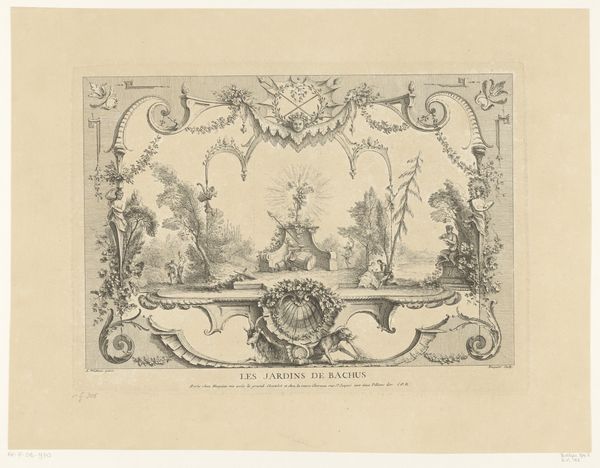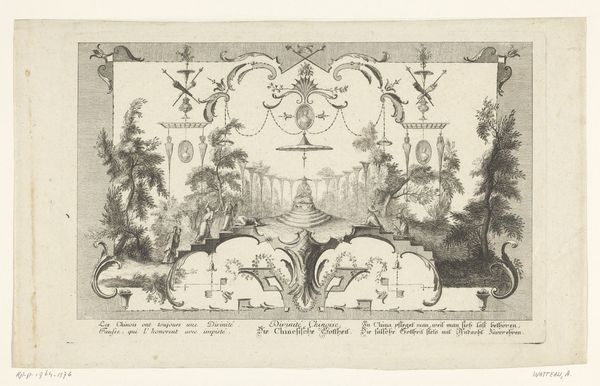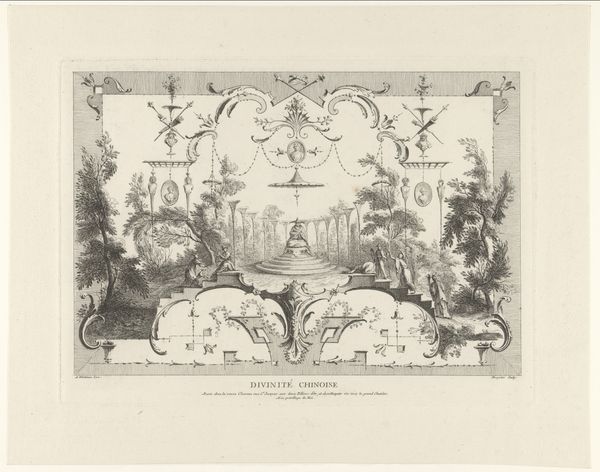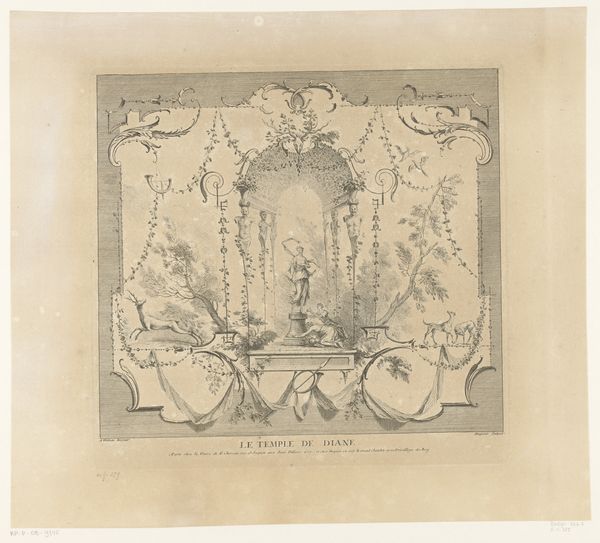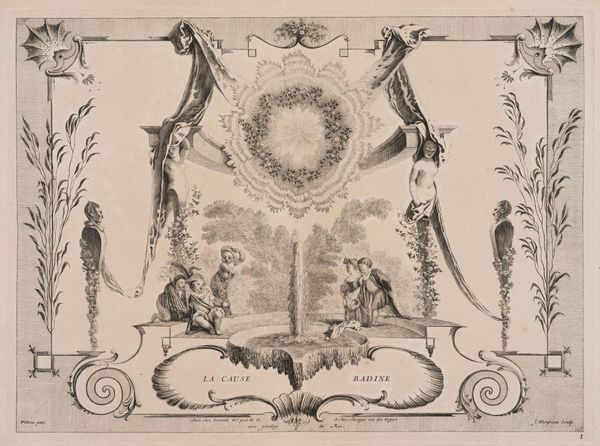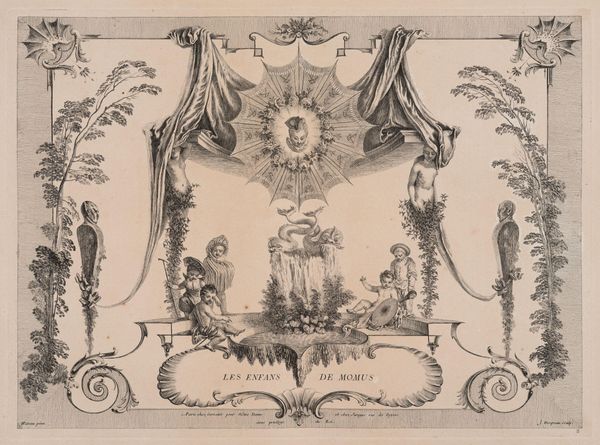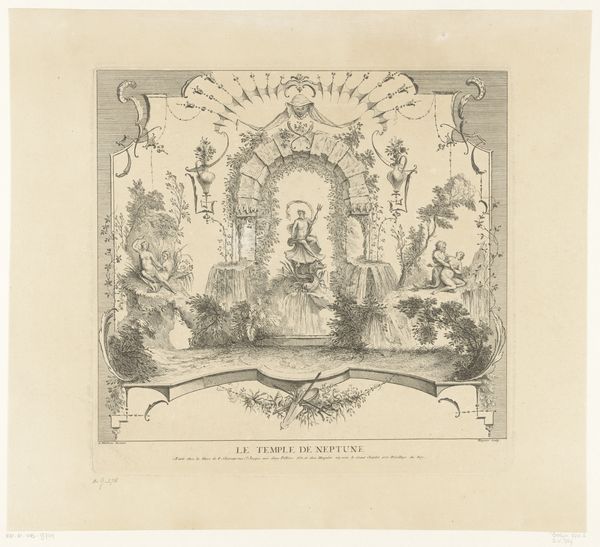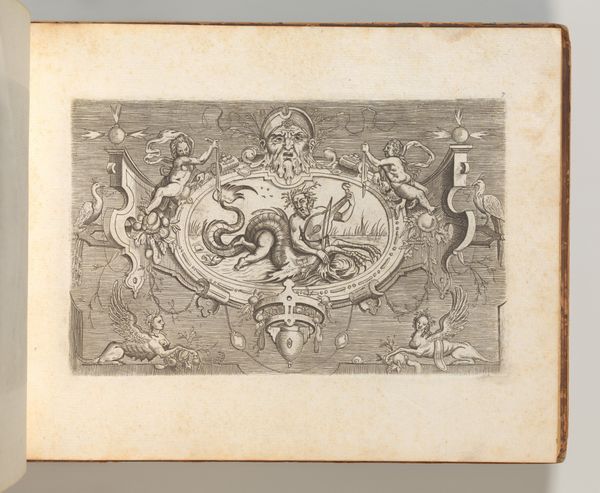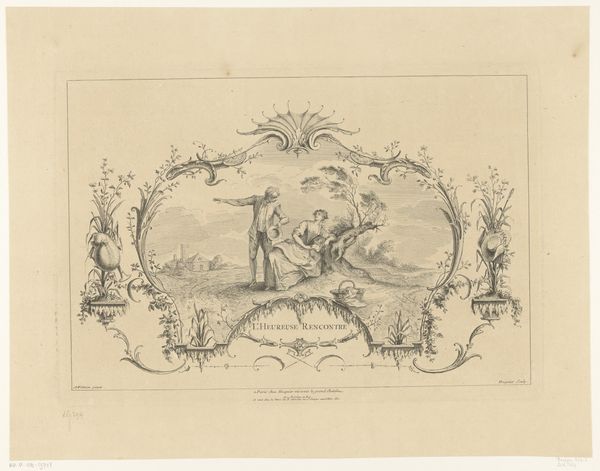
drawing, etching
#
drawing
#
light pencil work
#
allegory
#
baroque
#
pen drawing
#
mechanical pen drawing
#
pen sketch
#
etching
#
landscape
#
etching
#
figuration
#
form
#
personal sketchbook
#
ink drawing experimentation
#
pen-ink sketch
#
line
#
pen work
#
sketchbook drawing
#
history-painting
Dimensions: height 372 mm, width 501 mm
Copyright: Rijks Museum: Open Domain
Curator: Before us is "Ontwerp voor een lambrisering met kinderen in een tuin," a drawing by Jean Moyreau, likely created between 1726 and 1735. It resides here at the Rijksmuseum. Editor: My first impression is one of formal lightness, almost a sketched theatrical set. The carefully placed figures and flora create a balanced yet dreamlike world. Curator: Indeed, note how Moyreau utilizes line—etching, really—to delineate form with incredible precision, lending a sense of depth and airiness to the composition. The arrangement guides your eye symmetrically to its several different scenes. Editor: Beyond the purely visual, consider what a lambrisering, a type of wood panelling, symbolized in that era. Children in a garden—a common trope, certainly. Here, they are placed around a fountain and positioned next to labels indicating "La Cause" and "Badine", literally, “the cause” and “banter”, or, colloquially, a quarrel. This interplay can suggest themes of innocence and play juxtaposed against, perhaps, more serious undercurrents of adult relations. Curator: Absolutely. Furthermore, there's an intricate visual dialogue between the framing elements and the central vignette. See the symmetry echoed throughout, from the draped figures to the meticulously rendered floral ornaments. Note too, the pen and ink usage to portray detail is in equal stead. Editor: So the artwork might serve as an allegorical reminder, rendered beautiful and digestible: a symbolic caution about the loss of innocence and joy due to human fault? Curator: A convincing reading! One must not neglect, as well, how this rendering creates positive and negative space and balances tonal distribution using Baroque concepts in symmetry. Editor: True, its impact isn’t merely conceptual. The sheer technical skill elevates the piece. Even these choices indicate symbolism and intention. It suggests a deliberate effort to enshrine moral reflection within an ornamental format. Curator: A most insightful perspective. It shows a balance and the intersection of form, content, and era influence our appreciation and understanding. Editor: I agree completely, making this sketch a richer testament to design beyond just simple aesthetics.
Comments
No comments
Be the first to comment and join the conversation on the ultimate creative platform.

